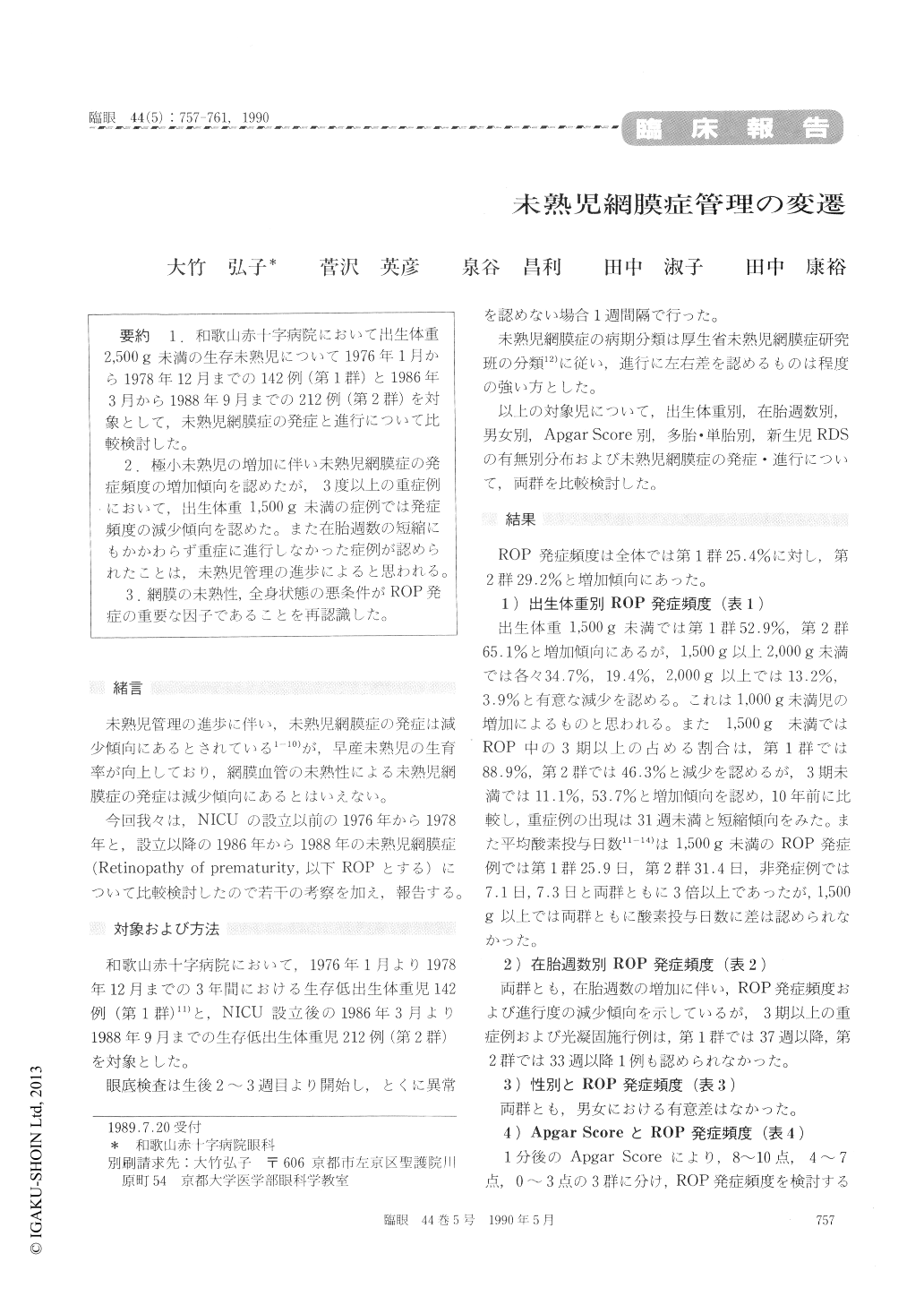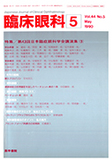Japanese
English
- 有料閲覧
- Abstract 文献概要
- 1ページ目 Look Inside
1.和歌山赤十字病院において出生体重2,500g末満の生存未熟児について1976年1月から1978年12月までの142例(第1群)と1986年3月から1988年9月までの212例(第2群)を対象として,未熟児網膜症の発症と進行について比較検討した。
2.極小末熟児の増加に伴い未熟児網膜症の発症頻度の増加傾向を認めたが,3度以上の重症例において,出生体重1,500g未満の症例では発症頻度の減少傾向を認めた。また在胎週数の短縮にもかかわらず重症に進行しなかった症例が認められたことは,未熟児管理の進歩によると思われる。
3,網膜の未熟性,全身状態の悪条件がROP発症の重要な因子であることを再認識した。
We evaluated the incidence and status of retinopathy of prematurity (ROP) in our neonatal intensive care unit. Premature infants weighing 2. 500 g or less at birth served as material of the study. The cases were divided into two groups. Group 1 included 142 cases seen during the 3-year period through 1978. Group 2 included 212 cases seen dur-ing a 30-month period through 1988.
There was a tendency for ROP to decrease along with improved neonatal care in recent years.Severe cases of ROP of stage 3 remained stable in its incidence because of an increase in surviving very low weight infants.
We could identify two cardinal contributing fac-tors to the development of ROP : premature state of the retina and the poor systemic condition of the infants.
We utilized the ROP score to describe the general status of ROP. The score included, as variables, the birthweight, gestational period, apgar score, use of oxygen, respiratory distress syndrome and the attack of apnea.

Copyright © 1990, Igaku-Shoin Ltd. All rights reserved.


